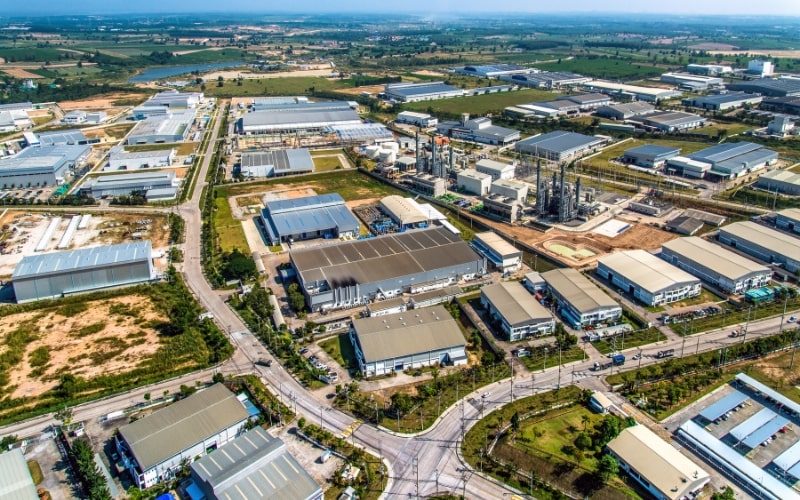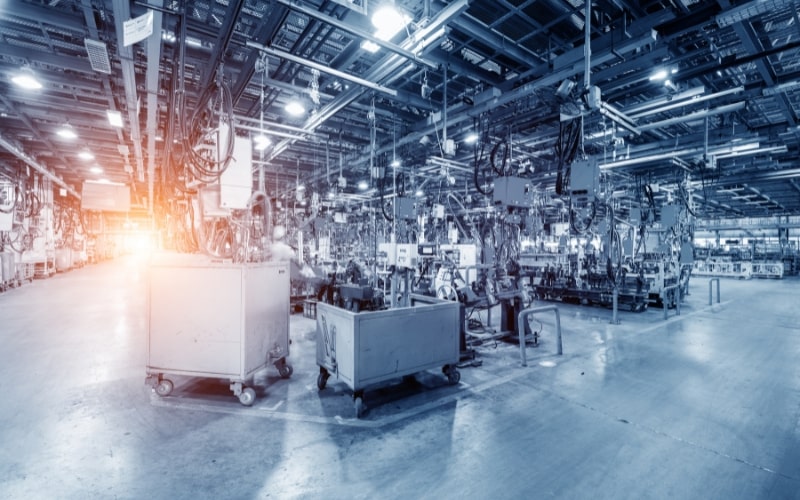- 1. Understanding the Evolving Manufacturing Landscape
- 2. Embracing Industry 4.0 and Smart Manufacturing
- 3. Workforce Transformation and Skill Development
- 4. Sustainable and Resilient Manufacturing Practices
- 5. Leveraging Data and Analytics for Decision Making
- Conclusion: Adapting to Changing Manufacturing Needs | JRG Partners
The manufacturing industry is in a state of constant evolution, driven by technological advancements, shifting market dynamics, and changing consumer demands. To remain competitive and sustainable, manufacturers must focus on adapting to changing manufacturing needs and anticipate future trends. This requires a comprehensive understanding of the evolving manufacturing landscape, the adoption of smart manufacturing technologies, the transformation of the workforce, the implementation of sustainable practices, and the effective use of data and analytics. By embracing these elements, manufacturers can excel in adapting to changing manufacturing needs, ensuring they are well-positioned to meet the challenges of the modern market and capitalize on new opportunities.
1. Understanding the Evolving Manufacturing Landscape

The manufacturing landscape is undergoing a significant transformation, driven by rapid technological advancements, shifting market dynamics, and evolving consumer demands. Understanding these changes is crucial for companies seeking to stay competitive and thrive in this dynamic environment.
Technological Advancements
One of the most significant drivers of change in manufacturing is technology. The advent of Industry 4.0 has introduced a new era of smart manufacturing, characterized by the integration of advanced technologies such as the Internet of Things (IoT), artificial intelligence (AI), machine learning, and robotics. These technologies enable manufacturers to address changing manufacturing needs and enhance productivity, improve quality, and reduce costs. For instance, IoT devices allow for real-time monitoring and maintenance of equipment, reducing downtime and increasing efficiency. To meet changing manufacturing needs, AI and machine learning algorithms analyze vast amounts of data to optimize production processes and predict maintenance needs, further improving operational efficiency. Adapting manufacturing processes to incorporate these advanced technologies is crucial for staying competitive in the evolving landscape.
Market Dynamics
Market dynamics are also influencing the manufacturing landscape. Globalization has led to an interconnected market where manufacturers must compete on a global scale. This has increased competition and driven the need for continuous innovation to address changing manufacturing needs. Additionally, trade policies and tariffs can impact supply chains and production costs, making adapting manufacturing processes crucial for maintaining efficiency and profitability.
The shift towards a global economy also means that manufacturers must navigate complex regulatory environments and diverse consumer preferences. Successfully addressing these changing manufacturing needs requires a proactive approach to adapting manufacturing processes, ensuring that production strategies remain aligned with evolving market demands.
Consumer Demands
Consumer demands are evolving due to trends such as customization, sustainability, and rapid product innovation. As changing manufacturing needs shift toward more personalized products, manufacturers must adapt their processes to efficiently produce small batches of customized items. Today’s consumers expect products tailored to their specific preferences, which drives the necessity for adapting manufacturing processes to accommodate mass customization. Additionally, sustainability has become a critical factor, with consumers increasingly favoring products that are environmentally friendly and ethically produced. This has prompted manufacturers to adopt sustainable practices and materials, addressing the changing manufacturing needs while reducing their environmental footprint and enhancing their brand reputation.
Impact of Global Events
Global events, such as the COVID-19 pandemic, have further highlighted the need for adaptability in manufacturing. The pandemic disrupted supply chains, forced factory closures, and altered consumer behavior almost overnight. Manufacturers that were able to swiftly address changing manufacturing needs by repurposing production lines to produce essential goods or by implementing remote work and digital collaboration tools, demonstrated the benefits of adapting manufacturing processes effectively. This experience has underscored the importance of resilience and flexibility in addressing changing manufacturing needs, as well as the critical role of adapting manufacturing processes to maintain operational efficiency and navigate crises.
Workforce Transformation
The evolving manufacturing landscape, driven by changing manufacturing needs, necessitates a transformation in the workforce. As technology becomes more integral to manufacturing processes, manufacturers must focus on adapting manufacturing processes to keep pace with these advancements. The demand for skilled workers who can operate and maintain advanced machinery, analyze data, and implement digital solutions is growing. These changing manufacturing needs have led to a skills gap that manufacturers must address through targeted training and development programs. By adapting manufacturing processes and investing in workforce development, companies can not only enhance operational capabilities but also attract and retain talent in an increasingly competitive labor market.
2. Embracing Industry 4.0 and Smart Manufacturing

Industry 4.0, also known as the Fourth Industrial Revolution, marks a new era in manufacturing, characterized by the integration of advanced digital technologies into production processes. This transformation, often referred to as smart manufacturing, enables manufacturers to achieve unprecedented levels of efficiency, flexibility, and customization.
Defining Industry 4.0
Industry 4.0 encompasses a range of technologies that are revolutionizing the manufacturing sector. As companies face changing manufacturing needs, the adoption of key components like the Internet of Things (IoT), artificial intelligence (AI), machine learning, robotics, and big data analytics becomes essential. These technologies work together to create interconnected systems that can communicate, analyze, and make decisions autonomously, effectively adapting manufacturing processes to meet the demands of a rapidly evolving market. The core idea behind Industry 4.0 is to create a smart factory where machines, systems, and humans are interconnected, enabling businesses to stay agile and responsive to changing manufacturing needs while continuously adapting manufacturing processes for enhanced efficiency.
Key Technologies
Internet of Things (IoT): IoT devices are embedded with sensors that collect data from various points in the production process. This data is then transmitted in real-time, allowing for continuous monitoring and analysis. IoT enables predictive maintenance, reducing downtime and improving overall equipment efficiency.
Artificial Intelligence and Machine Learning: AI and machine learning algorithms can analyze vast amounts of data to identify patterns and optimize processes. In manufacturing, AI can predict equipment failures, optimize supply chain logistics, and improve quality control. Machine learning allows systems to learn from data and improve their performance over time.
Robotics: Advanced robotics and automation play a crucial role in Industry 4.0. Robots can perform repetitive and complex tasks with high precision and consistency. Collaborative robots, or cobots, work alongside human workers, enhancing productivity and safety in the workplace.
Big Data Analytics: The massive amounts of data generated by IoT devices and other sources are analyzed using big data analytics. This allows manufacturers to gain insights into their operations, identify inefficiencies, and make data-driven decisions.
Benefits of Industry 4.0
Embracing Industry 4.0 technologies offers numerous benefits to manufacturers:
Increased Efficiency: Automation and real-time data analysis streamline production processes, reducing waste and increasing throughput. This leads to higher productivity and lower operational costs.
Enhanced Flexibility: Smart manufacturing systems can quickly adapt to changes in production requirements, enabling manufacturers to respond to market demands and customize products more efficiently.
Improved Quality: Advanced monitoring and predictive maintenance reduce defects and equipment failures, resulting in higher-quality products and fewer recalls.
Better Decision-Making: Data-driven insights enable manufacturers to make informed decisions, optimize supply chains, and improve overall business performance.
Sustainability: Efficient resource utilization and reduced waste contribute to more sustainable manufacturing practices, which are increasingly important to consumers and regulatory bodies.
Challenges in Adopting Industry 4.0
Despite the clear benefits, adopting Industry 4.0 technologies presents several challenges:
High Initial Investment: Implementing smart manufacturing technologies requires significant upfront investment in equipment, software, and training.
Skills Gap: The shift to Industry 4.0 necessitates a workforce with advanced technical skills. Manufacturers must invest in training and development to bridge the skills gap.
Data Security: The interconnected nature of smart factories increases the risk of cyber-attacks. Ensuring robust cybersecurity measures is critical.
Integration Complexity: Integrating new technologies with existing systems can be complex and requires careful planning and execution.
3. Workforce Transformation and Skill Development

The manufacturing sector is undergoing a profound transformation, driven by the integration of advanced technologies and evolving market demands. To keep pace with these changing manufacturing needs, companies must focus on adapting manufacturing processes that can effectively leverage automation and data-driven innovations. This shift necessitates a corresponding transformation in the workforce, emphasizing the importance of skill development and continuous learning. As manufacturing becomes increasingly automated and data-driven, the demand for skilled workers who can operate, manage, and innovate with these technologies is growing. By addressing changing manufacturing needs and adapting manufacturing processes, companies can ensure that their workforce is prepared to meet the challenges of this new industrial landscape. This article explores the key aspects of workforce transformation and the strategies for effective skill development in the manufacturing industry.
Evolving Skill Requirements
In the context of Industry 4.0, the skills required in the manufacturing sector are rapidly evolving. The shift is driven by changing manufacturing needs, where traditional roles that primarily involved manual labor are being augmented or replaced by roles that require a deep understanding of digital technologies. To meet these changing demands, companies are adapting manufacturing processes to incorporate advanced skills in areas such as robotics, data analytics, IoT, AI, and machine learning.
For instance, workers need to be proficient in programming and maintaining automated systems, which is essential for adapting manufacturing processes to modern standards. Additionally, interpreting data from IoT devices and leveraging AI for predictive maintenance and process optimization are critical skills that align with the changing manufacturing needs of the Industry 4.0 era.
Moreover, soft skills such as problem-solving, critical thinking, and adaptability are becoming more valuable. As manufacturing environments become more complex and dynamic, the ability to quickly adapt to new technologies and processes is crucial. Effective communication and collaboration skills are also important, as workers often need to coordinate with cross-functional teams to implement new technologies and drive continuous improvement.
Training and Development Programs
To address the evolving skill requirements, manufacturers must invest in comprehensive training and development programs. These programs should be designed to upskill and reskill the existing workforce, ensuring that employees are equipped with the knowledge and capabilities needed to thrive in a modern manufacturing environment.
Technical Training: Focus on providing hands-on training in the latest manufacturing technologies. This can include workshops, certifications, and partnerships with educational institutions. For example, training programs can cover topics such as PLC programming, robotics operation, and data analytics.
Continuous Learning: Encourage a culture of continuous learning by providing access to online courses, industry seminars, and conferences. This helps employees stay updated with the latest trends and advancements in the field.
Apprenticeships and Internships: Develop apprenticeship and internship programs to attract and nurture young talent. These programs provide practical experience and mentorship, preparing the next generation of manufacturing professionals.
Soft Skills Development: Incorporate training modules that focus on developing soft skills such as leadership, teamwork, and problem-solving. These skills are essential for fostering a collaborative and innovative workplace culture.
Role of Executive Leadership
Executive leadership plays a critical role in driving workforce transformation and skill development. Leaders must champion the importance of training and development, allocate resources, and create a supportive environment that encourages learning and growth. This involves setting clear goals, recognizing and rewarding skill acquisition, and fostering an inclusive culture that values diversity and innovation.
Vision and Strategy: Develop a clear vision and strategy for workforce transformation that aligns with the organization’s overall goals. This includes identifying skill gaps, setting training priorities, and tracking progress.
Resource Allocation: Invest in training infrastructure, such as dedicated learning centers, online platforms, and partnerships with educational institutions. Ensure that employees have the time and resources needed to participate in training programs.
Employee Engagement: Engage employees in the transformation process by involving them in decision-making, seeking their feedback, and recognizing their contributions. This helps build a sense of ownership and commitment to continuous improvement.
4. Sustainable and Resilient Manufacturing Practices

In today’s manufacturing landscape, sustainability and resilience are not just buzzwords; they are critical components of a successful business strategy. As environmental concerns grow and supply chains become more complex, manufacturers must adopt practices that ensure both ecological sustainability and operational resilience. This article explores the importance of sustainable and resilient manufacturing practices and provides strategies for implementing them effectively.
Importance of Sustainability in Manufacturing
Sustainability in manufacturing refers to the creation of products in ways that minimize negative environmental impacts, conserve energy and natural resources, and are safe for employees, communities, and consumers. Sustainable manufacturing is important for several reasons:
Environmental Responsibility: Reducing emissions, waste, and energy consumption helps combat climate change and protect natural resources.
Regulatory Compliance: Adhering to environmental regulations and standards is essential to avoid fines and sanctions.
Consumer Demand: Increasingly, consumers prefer products from companies that demonstrate a commitment to sustainability.
Cost Savings: Efficient use of resources and reduction of waste can lead to significant cost savings in the long term.
Implementing Sustainable Practices
Energy Efficiency: Implementing energy-efficient technologies and practices can significantly reduce energy consumption. This includes using energy-efficient machinery, optimizing production processes, and implementing energy management systems. Renewable energy sources such as solar and wind power can also be integrated into manufacturing operations.
Waste Reduction: Adopting practices that minimize waste generation is crucial. This can be achieved through lean manufacturing techniques, recycling programs, and designing products for easy disassembly and recycling. Reducing packaging materials and using biodegradable or recyclable packaging also contribute to waste reduction.
Sustainable Sourcing: Ensuring that raw materials are sourced sustainably is vital. This involves selecting suppliers who adhere to environmental standards and practices, using recycled or renewable materials, and ensuring the ethical treatment of workers throughout the supply chain.
Water Conservation: Implementing water-saving technologies and practices can reduce water consumption and minimize the impact on local water resources. This includes recycling wastewater, using water-efficient equipment, and monitoring water usage to identify and address inefficiencies.
Green Product Design: Designing products with sustainability in mind involves using materials that have a lower environmental impact, designing for durability and recyclability, and reducing the overall environmental footprint of the product throughout its lifecycle.
Building Resilience in Manufacturing
Resilience in manufacturing refers to the ability to withstand and recover from disruptions, whether they are caused by natural disasters, economic shifts, or other unforeseen events. Building resilience involves:
Diversified Supply Chains: Having multiple suppliers and sourcing options can mitigate the risk of supply chain disruptions. Developing local supply chains can also reduce dependency on global networks and shorten lead times.
Flexible Manufacturing Processes: Implementing flexible manufacturing systems that can quickly adapt to changes in demand or production requirements is crucial. This includes investing in modular equipment, training employees in multiple skills, and adopting agile manufacturing techniques.
Risk Management: Conducting regular risk assessments to identify potential vulnerabilities and developing contingency plans to address them is essential. This includes maintaining buffer stocks of critical materials and components, diversifying product lines, and investing in insurance coverage.
Digital Transformation: Leveraging digital technologies such as IoT, AI, and data analytics can enhance visibility and control over manufacturing processes. This enables real-time monitoring, predictive maintenance, and quick response to disruptions.
5. Leveraging Data and Analytics for Decision Making

In the rapidly evolving manufacturing landscape, the ability to make informed, data-driven decisions is a critical component of operational success. Leveraging data and analytics enables manufacturers to optimize processes, enhance productivity, and maintain a competitive edge. This article explores the significance of data and analytics in manufacturing and outlines strategies for effectively integrating these tools into decision-making processes.
The Role of Data in Manufacturing
Data is the lifeblood of modern manufacturing. It provides valuable insights into every aspect of the production process, from supply chain management to equipment maintenance. The role of data in manufacturing can be categorized into several key areas:
Operational Efficiency: By collecting and analyzing data from various points in the production line, manufacturers can identify bottlenecks, inefficiencies, and areas for improvement. This leads to streamlined operations and reduced waste.
Quality Control: Data-driven quality control processes ensure that products meet high standards and specifications. By monitoring production in real-time, manufacturers can detect defects early and take corrective actions before faulty products reach customers.
Predictive Maintenance: Using data from sensors and IoT devices, manufacturers can predict when equipment is likely to fail and perform maintenance proactively. This reduces downtime and extends the lifespan of machinery.
Supply Chain Optimization: Data analytics enables better demand forecasting, inventory management, and supplier performance monitoring. This results in more efficient supply chain operations and reduced costs.
Product Development: Insights from data can inform the design and development of new products. By analyzing market trends and customer feedback, manufacturers can create products that better meet consumer needs and preferences.
Advanced Analytics in Manufacturing
Advanced analytics, including predictive and prescriptive analytics, take data utilization to the next level. These techniques provide deeper insights and more precise decision-making capabilities.
Predictive Analytics: Predictive analytics uses historical data to forecast future events. In manufacturing, this can be used to predict equipment failures, demand fluctuations, and production outcomes. For example, by analyzing patterns in machine performance data, manufacturers can anticipate maintenance needs and prevent breakdowns.
Prescriptive Analytics: Prescriptive analytics goes beyond prediction to recommend specific actions. It uses optimization algorithms to suggest the best course of action based on data insights. In manufacturing, prescriptive analytics can help in optimizing production schedules, resource allocation, and supply chain strategies.
Big Data: The sheer volume of data generated in modern manufacturing requires advanced tools and techniques to manage and analyze it. Big data analytics platforms can handle large datasets, enabling manufacturers to gain insights from diverse data sources and make more informed decisions.
Implementing Data-Driven Decision Making: Adapting Manufacturing Processes
To effectively leverage data and analytics, manufacturers need to implement a robust data strategy. This involves several key steps:
Data Collection: Implement systems to collect data from various sources, including production equipment, supply chain partners, and market research. IoT devices and sensors can provide real-time data on equipment performance and environmental conditions.
Data Integration: Integrate data from different sources into a centralized system for comprehensive analysis. This requires interoperability between different data systems and formats.
Data Analysis: Use advanced analytics tools to process and analyze the data. This includes statistical analysis, machine learning algorithms, and visualization tools that help interpret complex data sets.
Data Governance: Establish policies and procedures for data management, including data quality, security, and privacy. Ensuring the accuracy and integrity of data is critical for making reliable decisions.
Skill Development: Invest in training and development to build the analytical skills of your workforce. This includes hiring data scientists, training existing employees in data analysis, and fostering a culture of data-driven decision making.
Conclusion: Adapting to Changing Manufacturing Needs | JRG Partners
In conclusion, the journey towards adapting to changing manufacturing needs is multifaceted and requires a strategic approach. Understanding current trends and the impact of technology is the first step. Embracing Industry 4.0 and smart manufacturing can drive significant efficiencies and innovations. Workforce transformation is essential to equip employees with the skills needed for this new era. Sustainable and resilient practices not only protect the environment but also ensure long-term operational stability. Finally, leveraging data and analytics empowers manufacturers to make informed decisions that enhance overall performance. By integrating these strategies, manufacturers can navigate the complexities of today’s market and build a foundation for future success. Read about The Top 10 Best Manufacturing Recruiters in 2024.


